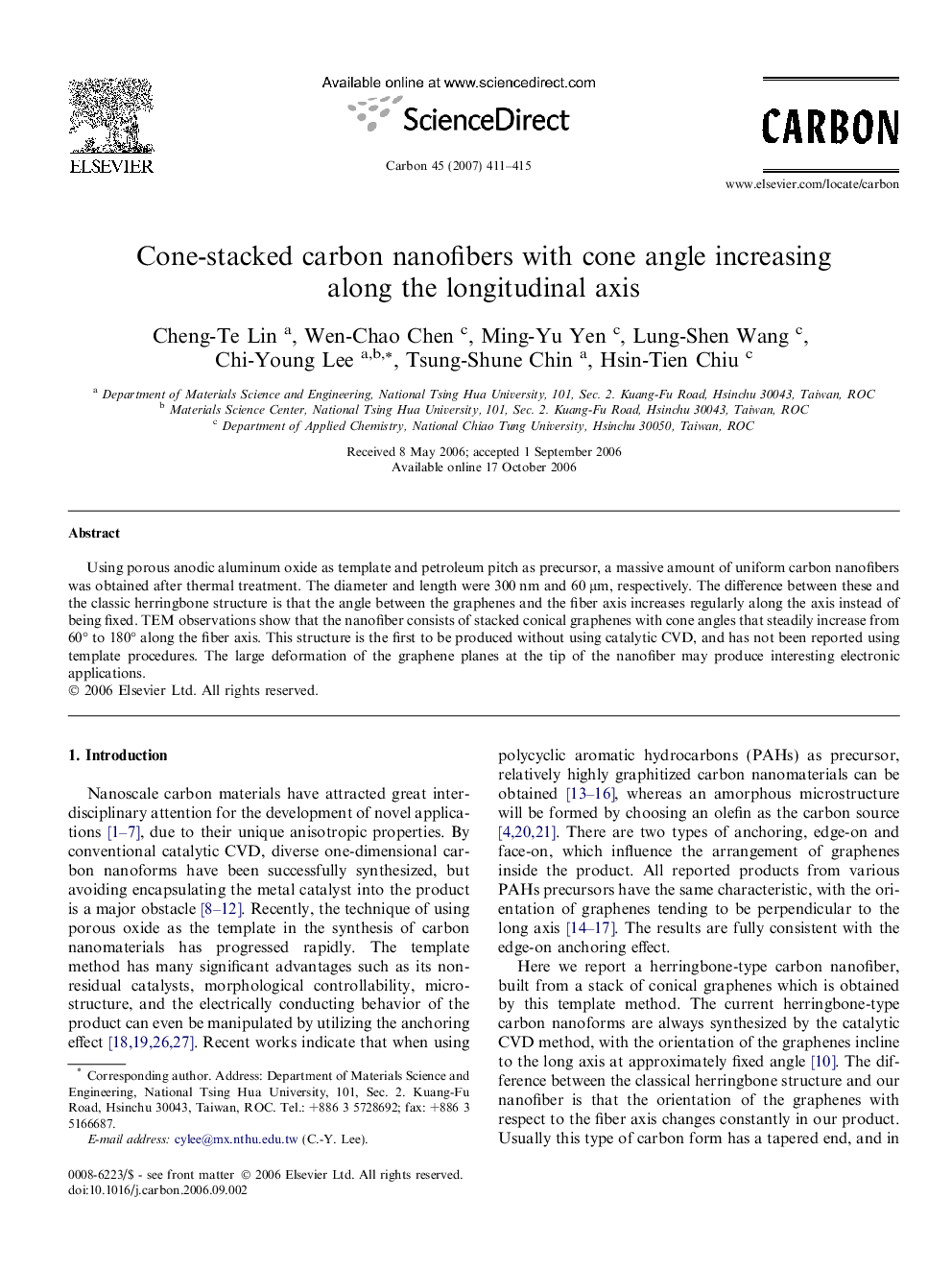| Article ID | Journal | Published Year | Pages | File Type |
|---|---|---|---|---|
| 1419101 | Carbon | 2007 | 5 Pages |
Abstract
Using porous anodic aluminum oxide as template and petroleum pitch as precursor, a massive amount of uniform carbon nanofibers was obtained after thermal treatment. The diameter and length were 300 nm and 60 μm, respectively. The difference between these and the classic herringbone structure is that the angle between the graphenes and the fiber axis increases regularly along the axis instead of being fixed. TEM observations show that the nanofiber consists of stacked conical graphenes with cone angles that steadily increase from 60° to 180° along the fiber axis. This structure is the first to be produced without using catalytic CVD, and has not been reported using template procedures. The large deformation of the graphene planes at the tip of the nanofiber may produce interesting electronic applications.
Related Topics
Physical Sciences and Engineering
Energy
Energy (General)
Authors
Cheng-Te Lin, Wen-Chao Chen, Ming-Yu Yen, Lung-Shen Wang, Chi-Young Lee, Tsung-Shune Chin, Hsin-Tien Chiu,
